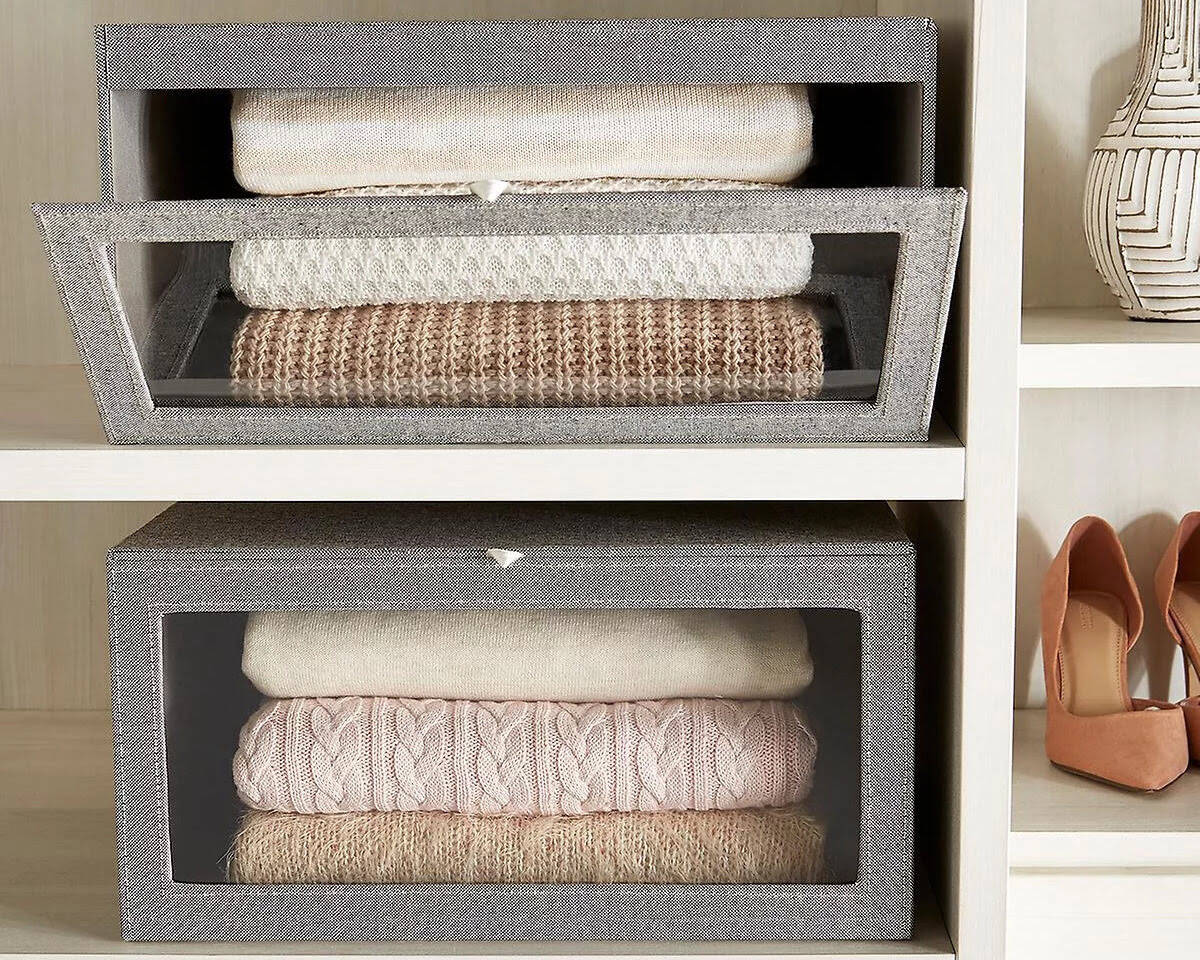

Articles
How To Store Bulky Sweaters
Modified: January 20, 2024
Learn the best way to store bulky sweaters with these helpful articles. Keep your sweaters looking great all year long.
(Many of the links in this article redirect to a specific reviewed product. Your purchase of these products through affiliate links helps to generate commission for Storables.com, at no extra cost. Learn more)
Introduction
When the colder months approach, it’s time to dig out those cozy bulky sweaters that have been tucked away during the warmer seasons. However, storing these chunky knits can be a challenge, as their size and thickness make them prone to damage and deformation. To ensure that your beloved sweaters stay in excellent condition until the next winter season, it’s important to follow proper storage techniques.
In this article, we’ll explore the best practices for storing bulky sweaters. We’ll discuss finding the right storage space, cleaning and preparing the sweaters for storage, various folding techniques, choosing the right storage containers, and alternative options such as hanging sweaters in the closet or using vacuum storage bags. We’ll also provide tips on protecting your sweaters from moths and pests and offer advice on regular maintenance and inspections to keep them in their best shape.
By following these guidelines, you can ensure that your sweaters remain soft, cozy, and free from any damage or unwanted visitors during the off-season. So let’s dive in and discover the secrets to storing bulky sweaters!
Key Takeaways:
- Proper storage of bulky sweaters involves finding the right space, cleaning, folding, and choosing breathable containers. Protect them from moths, pests, and maintain regularly for long-lasting coziness.
- To store bulky sweaters effectively, find a suitable space, clean and fold them properly, choose breathable containers, and protect them from moths and pests. Regular maintenance ensures their longevity and coziness.
Read more: How To Store Bulky Hoodies
Finding the Right Storage Space
When it comes to storing your bulky sweaters, the first step is to find the right storage space. The ideal location should be cool, dry, and away from direct sunlight. Excessive heat and sunlight can cause the colors to fade and the fabric to become brittle over time. Avoid storing your sweaters in attics, garages, or basements, as these areas tend to have fluctuations in temperature and humidity.
If possible, choose a dedicated storage area such as a spare closet or a clean, dry section of your wardrobe. This will ensure that your sweaters are protected and easily accessible when you need them.
Consider investing in a wardrobe or clothing rack with a breathable cover to create an enclosed storage space for your bulky sweaters. This will protect them from dust and allow air circulation to prevent mildew or musty odors.
Another tip is to avoid overcrowding your storage area. Allow enough space between the sweaters to prevent them from being crushed or getting misshapen. This will also make it easier to locate and retrieve specific items without causing unnecessary damage.
Lastly, if you live in a region with high humidity or extreme temperature changes, consider using a dehumidifier or moisture absorbers in the storage area to minimize the risk of mold or mildew growth.
By finding the right storage space, you are laying the foundation for proper sweater storage and ensuring their long-term preservation.
Cleaning and Preparing Sweaters for Storage
Before storing your bulky sweaters, it’s important to give them a thorough cleaning to remove any dirt, stains, or odors that may attract pests or cause damage during storage. Follow these steps to properly clean and prepare your sweaters:
- Check the care instructions: Each sweater may have specific care instructions that you should follow. Check the label for guidance on the appropriate cleaning method.
- Spot clean: If there are any visible stains, gently spot clean them using a mild detergent or stain remover. Be sure to test the product on an inconspicuous area of the sweater first to ensure it doesn’t cause any damage or discoloration.
- Hand or gentle machine wash: Unless the care instructions specify dry cleaning only, it is generally safe to hand wash or use a gentle machine cycle on cold or delicate settings for most sweaters. Use a mild detergent specifically designed for delicate fabrics.
- Reshape and air dry: After washing, gently reshape the sweater to its original form. Lay it flat on a clean towel or drying rack to air dry. Avoid hanging the sweater, as this can stretch it out and cause it to lose its shape.
- De-pill: Use a fabric shaver or a sweater comb to remove any pilling or fuzz that may have accumulated on the surface of the sweater. This will help keep it looking fresh and new.
- Fold or roll: Once the sweater is completely dry, fold it neatly or roll it gently to minimize creases and wrinkles. This will also help save space in your storage containers.
It’s worth noting that before storing your sweaters, ensure you have adequate time for them to dry completely. Storing damp or moist sweaters can lead to mold or mildew growth, which can be damaging to the fabric.
By cleaning and preparing your sweaters before storage, you’ll help to maintain their quality and freshness for the next winter season.
Folding Techniques for Bulky Sweaters
Folding bulky sweaters can be a bit challenging due to their thickness and size. However, proper folding techniques can help maximize storage space and prevent creasing or stretching. Here are some folding techniques to consider:
- Classic Fold: Lay the sweater flat on a clean surface and fold it in half vertically, aligning the sleeves. Then, fold it in half horizontally, bringing the bottom hem up towards the neckline. This creates a compact rectangular shape that can be easily stacked or placed in storage containers.
- Shoulder Pad Fold: Lay the sweater flat and fold one side towards the center, stopping at the shoulder seam. Repeat with the other side. This creates a narrower shape, making it easier to store multiple sweaters in a drawer or on a shelf.
- Rolling Method: Lay the sweater flat and fold the sleeves in towards the center. Then, starting from the bottom hem, tightly roll the sweater up towards the neckline. This method is particularly useful for saving space in storage containers or suitcases.
- Hanger Fold: If you prefer hanging your sweaters, fold them in half vertically and hang them over a padded hanger. This helps maintain the shape of the sweater and minimizes stretching. Avoid using wire hangers, as they can leave creases or damage the fabric.
Regardless of the folding method you choose, it’s important to handle your sweaters with care to avoid stretching or distorting the fabric. Avoid hanging your sweaters by the neckline or using clips, as this can cause stretching and leave unsightly marks. Additionally, make sure you fold the sweater neatly and evenly to maintain its shape.
Remember that bulky sweaters are best stored in a cool, dry place away from direct sunlight. Store them in a storage container or place them on shelves or in drawers, ensuring there is enough space to prevent crushing or misshaping.
By mastering these folding techniques, you can make the most of your storage space while keeping your sweaters in excellent condition for future use.
Choosing the Right Storage Containers
Once your bulky sweaters are clean and neatly folded, it’s time to choose the right storage containers to keep them protected and organized. Here are some factors to consider when selecting storage containers:
- Material: Opt for storage containers made of breathable materials, such as fabric or canvas. These materials allow air circulation and help prevent moisture buildup, reducing the risk of mildew or musty odors. Avoid plastic containers, as they can trap moisture and potentially damage the sweaters.
- Size: Select storage containers that comfortably accommodate your folded sweaters without cramming them or leaving excessive empty space. Choosing containers that are too large may lead to unnecessary shifting or bulging, while containers that are too small can cause creasing or distortion.
- Stackability: Look for containers that are designed to be stackable. This feature allows for efficient use of storage space and makes it easier to access specific items without disturbing the rest of the stack.
- Clear or labeled: Consider using clear containers or labeling them to easily identify the contents. This makes it convenient to locate specific sweaters without having to dig through multiple containers.
- Sealing ability: If you live in an area prone to pests, such as moths, choose containers with airtight or tight-fitting lids to prevent unwanted intruders. This is especially important if you plan to store your sweaters for an extended period.
Keep in mind that while storage containers offer protection, it’s still important to store your sweaters in a suitable environment, away from extreme temperatures, humidity, and direct sunlight. Also, avoid overpacking the containers, as this can lead to unnecessary pressure on the sweaters.
If you don’t have access to storage containers, you can also use large, breathable fabric bags or vacuum storage bags. Just make sure to follow the manufacturer’s instructions for the vacuum bags to avoid damaging the sweaters.
By investing in the right storage containers, you can keep your bulky sweaters safe, well-organized, and in optimal condition until you’re ready to wear them again.
Read more: How To Store A Cashmere Sweater
Storing Sweaters in Drawers or Shelves
If you have drawer or shelf space available, storing your bulky sweaters in these areas can be a convenient and accessible option. Here are some tips to consider when storing sweaters in drawers or shelves:
- Use clean and lined drawers: Before placing your sweaters in drawers, make sure they are clean and free from dust or debris. Line the drawers with acid-free tissue paper or clean cotton sheets to provide a protective layer between the sweaters and the drawer surface.
- Organize by category or color: Sort your sweaters by category or color and group them together within the drawers. This will make it easier to locate specific sweaters when you need them. Consider using dividers or fabric bins to further separate different sweater groups.
- Avoid piling: Avoid piling too many sweaters on top of each other in a single drawer. This can cause wrinkles and distort the sweaters at the bottom of the pile. Instead, opt for a single layer or stack them neatly in small groups.
- Rotate occasionally: To prevent excessive pressure on certain areas of the sweater, rotate the position of the sweaters periodically. This helps distribute the weight and minimizes the chances of creasing or stretching.
- Don’t overstuff: While it can be tempting to maximize space in the drawers, avoid overstuffing them. Overcrowding can lead to wrinkles, misshaping, and difficulty in retrieving specific items.
For storing sweaters on shelves, follow similar principles:
- Fold neatly: Fold your sweaters using the techniques mentioned earlier and place them on the shelves. Make sure to fold them uniformly to maintain their shape.
- Use dividers or bins: Use dividers or fabric bins to separate different groups of sweaters or to create sections for other clothing items.
- Avoid overloading: Be mindful of the weight capacity of the shelves and avoid overloading them with too many sweaters. This can cause strain on the shelves and may result in sagging or damage.
Remember to periodically inspect the drawers or shelf space for any signs of pests or moisture. If you find any issues, take immediate action to address them and protect your sweaters.
By following these guidelines, you can store your bulky sweaters in drawers or on shelves in an organized and accessible manner, making it easier to maintain their condition and extend their lifespan.
To store bulky sweaters, fold them instead of hanging to prevent stretching. Use breathable storage bags or containers to protect them from dust and pests. Avoid overcrowding to maintain their shape.
Hanging Sweaters in the Closet
If you have sufficient closet space, hanging your bulky sweaters can be a practical option. However, it’s important to do it correctly to prevent stretching and maintain the shape of the sweaters. Here are some tips for hanging sweaters in the closet:
- Choose the right hangers: Use padded or wooden hangers to provide proper support for your sweaters. Avoid wire hangers, as they can leave creases or stretch the fabric.
- Avoid hanging by the neckline: Instead, fold the sweater in half vertically and drape it over the hanger, ensuring that the hanger runs through the folded section of the sweater rather than the neckline. This helps prevent stretching and distortion.
- Allow space between sweaters: Hang your sweaters at regular intervals to provide enough space between them. This prevents overcrowding, which can cause wrinkles and stretching.
- Use cascading hooks: To save space, you can use cascading hooks or multiple-tiered hangers that allow you to hang multiple sweaters vertically. This maximizes your closet space while keeping the sweaters easily accessible.
- Rotate regularly: To minimize the chances of stretching or misshaping, rotate the position of your sweaters on the hangers periodically. This helps distribute the weight and ensures even wear.
It’s worth noting that hanging sweaters for an extended period may cause them to lose their shape over time. If you choose to hang your sweaters, ensure that they are not hanging for too long and periodically check for any signs of stretching or distortion.
Remember to select a closet space that is cool, dry, and well-ventilated. If there are any signs of moisture or pests in the closet, take appropriate measures to address the issues before storing your sweaters there.
By properly hanging your sweaters in the closet, you can keep them organized and easily accessible while minimizing the risk of damage or stretching.
Using Vacuum Storage Bags
Vacuum storage bags are a popular choice for storing bulky items such as sweaters, as they can significantly reduce the amount of space needed. By removing excess air, these bags can compress your sweaters, making them more compact and easier to store. Here are some tips on how to effectively use vacuum storage bags:
- Ensure sweaters are clean and dry: Before placing your sweaters in the bags, make sure they are clean and completely dry. Moisture can lead to mold or mildew growth, so it’s crucial to start with dry garments.
- Fold sweaters neatly: Fold your sweaters using one of the folding techniques mentioned earlier, ensuring they are neatly folded to avoid creasing. This will also help optimize the storage space inside the bags.
- Place sweaters in the bag: Open the vacuum storage bag and carefully place your folded sweaters inside. Be mindful not to overstuff the bag, as this can impact the effectiveness of the vacuum seal.
- Seal the bag: Once the sweaters are inside the bag, seal it using the provided closure mechanism, typically a zip-lock or slider. Ensure that the seal is tight to prevent air from entering the bag during the vacuuming process.
- Use a vacuum cleaner or pump: Attach the vacuum cleaner or pump to the valve on the bag. Start the suction process to remove the air from inside the bag. The vacuum will compress the sweaters, making them more compact.
- Monitor the bag: While the vacuum is running, keep an eye on the bag to ensure that it is properly sealing and the air is being efficiently removed. This will help ensure a tight seal and maximum compression.
- Store in a suitable location: Once the bag is fully compressed, you can store it in a closet, under the bed, or any other suitable storage location. Avoid storing the bag in areas with extreme temperature fluctuations or high humidity.
It’s important to note that while vacuum storage bags can be effective for reducing the volume of your sweaters, they may not be ideal for long-term storage. Extended compression can potentially cause the sweaters to lose their shape or alter their texture. Therefore, it’s advisable to use vacuum storage bags for shorter periods, such as seasonal storage, or consider rotating the sweaters periodically to alleviate any potential damage.
By following these steps and using vacuum storage bags correctly, you can save a significant amount of space while keeping your bulky sweaters protected until you need them again.
Tips for Protecting Sweaters from Moths and Pests
When storing your sweaters, it’s important to take precautions to protect them from moths and other pests that can cause damage to the fabric. Here are some tips to keep your sweaters safe:
- Clean sweaters thoroughly: Before storing your sweaters, make sure they are clean. Moths are attracted to dirt, stains, and food particles left on the fabric. Launder or dry clean your sweaters according to the care instructions before storage.
- Use moth deterrents: Place natural moth deterrents, such as lavender sachets, cedar chips, or dried rosemary, in your storage containers or closet. Moths dislike the smell of these natural substances and are less likely to be attracted to your sweaters.
- Avoid mothballs: While mothballs are effective at repelling moths, they emit toxic fumes that can be harmful to both humans and the environment. Opt for safer alternatives, such as lavender or cedar, to protect your sweaters.
- Regularly inspect storage areas: Periodically check your storage containers, drawers, or closet for any signs of moths or pests. Look for small holes, larvae, or eggs as indications of an infestation. If you spot any signs, take immediate action to address the issue.
- Freeze your sweaters: If you suspect your sweaters may have moth eggs or larvae, place them in a sealed bag and freeze them for a few days. Freezing kills moths and their larvae, effectively eliminating any potential infestation.
- Use garment covers: If you prefer to hang your sweaters, invest in breathable garment covers to protect them from dust and pests. Make sure the covers are large enough to accommodate the folded sweaters without causing excessive compression.
- Keep storage areas clean: Maintaining cleanliness in your storage areas helps prevent pests from being attracted to the space. Vacuum regularly, remove any food crumbs or debris, and ensure the area is dry and well-ventilated.
By implementing these preventive measures, you can significantly reduce the risk of moth and pest damage to your sweaters, allowing them to remain in pristine condition for future use.
Read more: How To Store Sweaters
Regular Maintenance and Inspections
To ensure the longevity of your bulky sweaters and keep them in optimal condition, regular maintenance and inspections are essential. Here are some tips to help you maintain your sweaters:
- Air them out: Every few months, remove your sweaters from storage and give them some fresh air. Hang them or lay them flat in a well-ventilated area for a few hours. This helps prevent any musty odors from setting in and allows the fibers to breathe.
- Check for pests: During the airing-out process, inspect your sweaters for any signs of pests, such as moths or larvae. Look for small holes, webbing, or damage. If you notice any signs of an infestation, take immediate action to eliminate the pests.
- Inspect for damage: Thoroughly examine your sweaters for any signs of wear and tear, snags, or loose threads. Repair any damage as soon as possible to prevent it from worsening. This includes sewing loose buttons, reinforcing seams, or mending small holes.
- Rotate and refold: To prevent excessive pressure on certain areas, rotate the position of your sweaters when you air them out. Also, refold them using different techniques to minimize creasing and help maintain their shape.
- Remove wrinkles: If your sweaters have developed wrinkles while in storage, gently steam or iron them on a low heat setting. Be cautious when ironing, as high heat can damage the fibers. You can also hang them in the bathroom during a hot shower to let steam naturally release wrinkles.
- Store seasonally: When the winter season ends, properly clean and store your sweaters until the next season. Use the storage techniques and containers mentioned earlier in this article to keep them protected. Avoid storing sweaters in humid or sun-exposed areas.
- Maintain proper closet conditions: If you choose to hang your sweaters in the closet, ensure the closet is well-ventilated, dry, and free from pests. Regularly clean your closet, inspect for any signs of moisture or pests, and address any issues promptly.
By implementing these regular maintenance and inspection practices, you can extend the lifespan of your sweaters and keep them looking their best for years to come.
Conclusion
Storing bulky sweaters requires proper care and attention to ensure their longevity and keep them in excellent condition. By following the tips and techniques outlined in this article, you can store your sweaters with confidence, knowing that they will be ready for the next winter season. Here’s a quick recap of the key points:
Firstly, find a suitable storage space that is cool, dry, and away from direct sunlight. This will help preserve the quality of your sweaters.
Clean your sweaters thoroughly before storage, following the care instructions. Proper cleaning will remove any dirt, stains, or odors and prevent attracting pests or causing damage.
When folding your sweaters, use appropriate techniques to minimize creasing and save space. Choose the right storage containers made of breathable materials, and consider using dividers or bins for better organization.
If you prefer to hang your sweaters, use padded hangers and avoid hanging by the neckline to prevent stretching. Ensure there is enough space between each sweater to maintain their shape.
Consider using vacuum storage bags to compress your sweaters and save storage space. However, be cautious not to compress them for too long to avoid potential damage.
To protect your sweaters from moths and pests, use natural deterrents, regularly inspect storage areas, and maintain cleanliness. Avoid mothballs and opt for safer alternatives such as lavender sachets or cedar chips.
Lastly, don’t forget about regular maintenance and inspections. Air out your sweaters, check for pests or damage, and take appropriate measures to address any issues.
By implementing these strategies, your bulky sweaters will be well-preserved, ready to provide warmth and comfort when the colder months arrive. Remember, proper storage and care are key to maintaining the quality, shape, and longevity of your beloved sweaters. Happy storing!
Frequently Asked Questions about How To Store Bulky Sweaters
Was this page helpful?
At Storables.com, we guarantee accurate and reliable information. Our content, validated by Expert Board Contributors, is crafted following stringent Editorial Policies. We're committed to providing you with well-researched, expert-backed insights for all your informational needs.

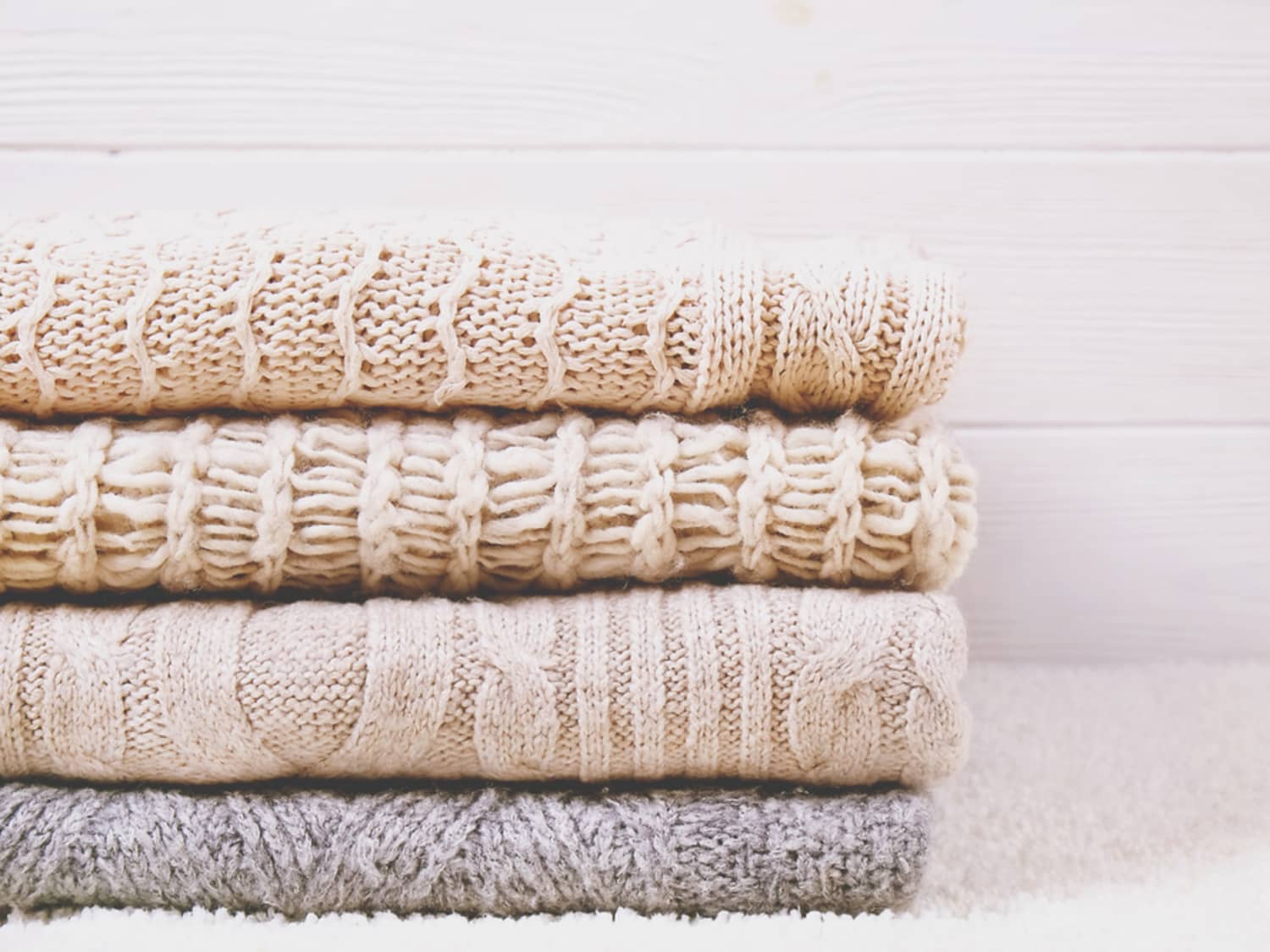
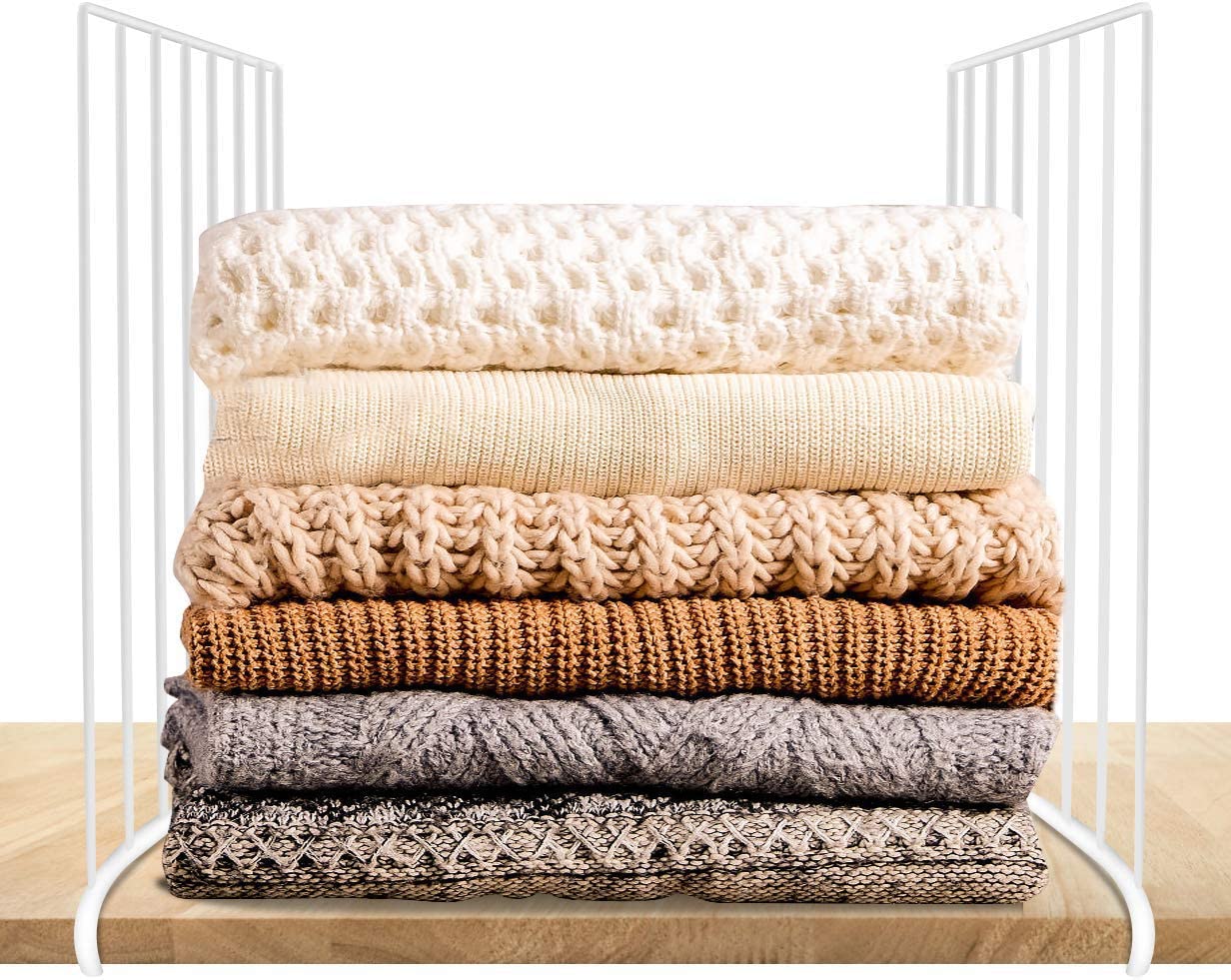
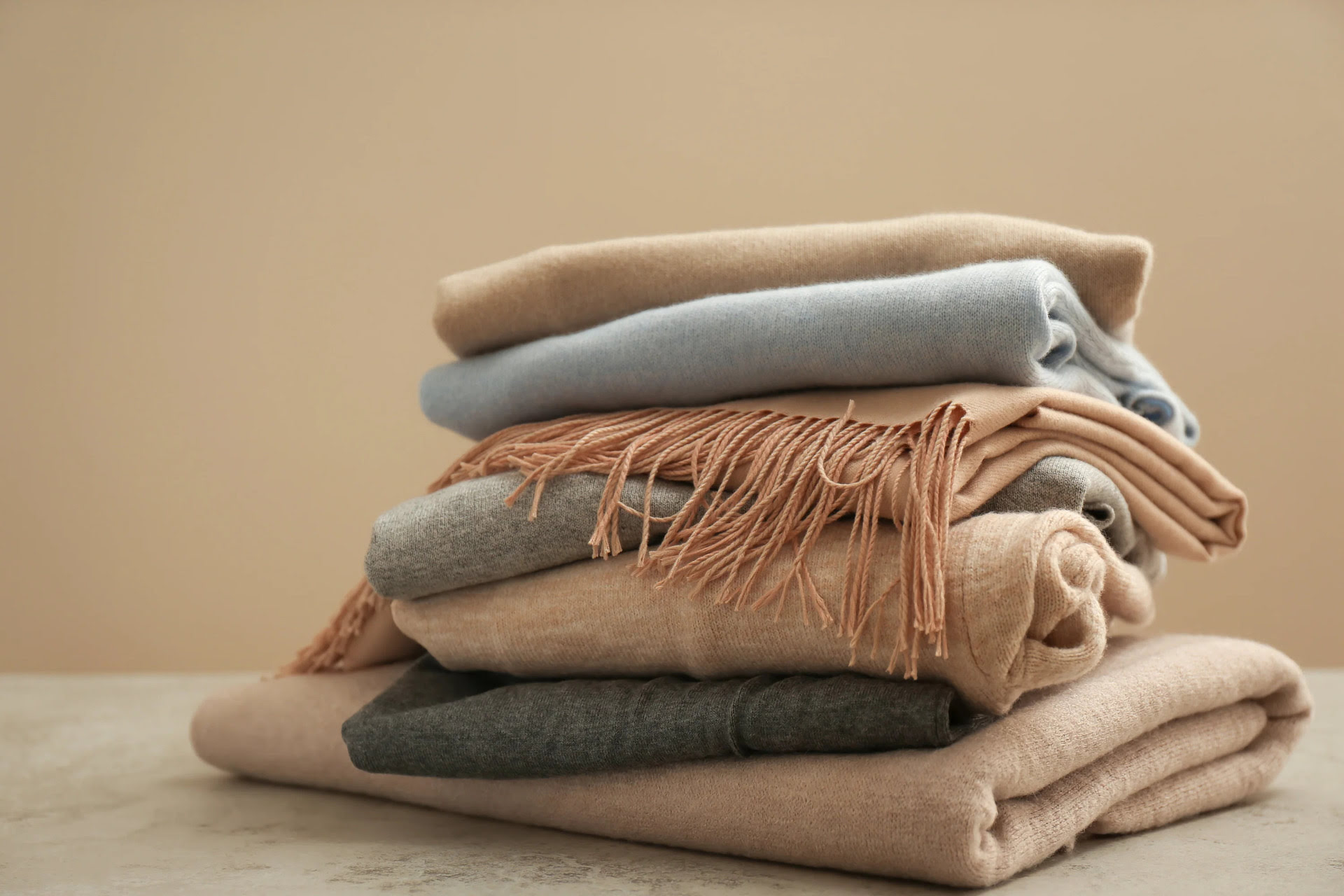


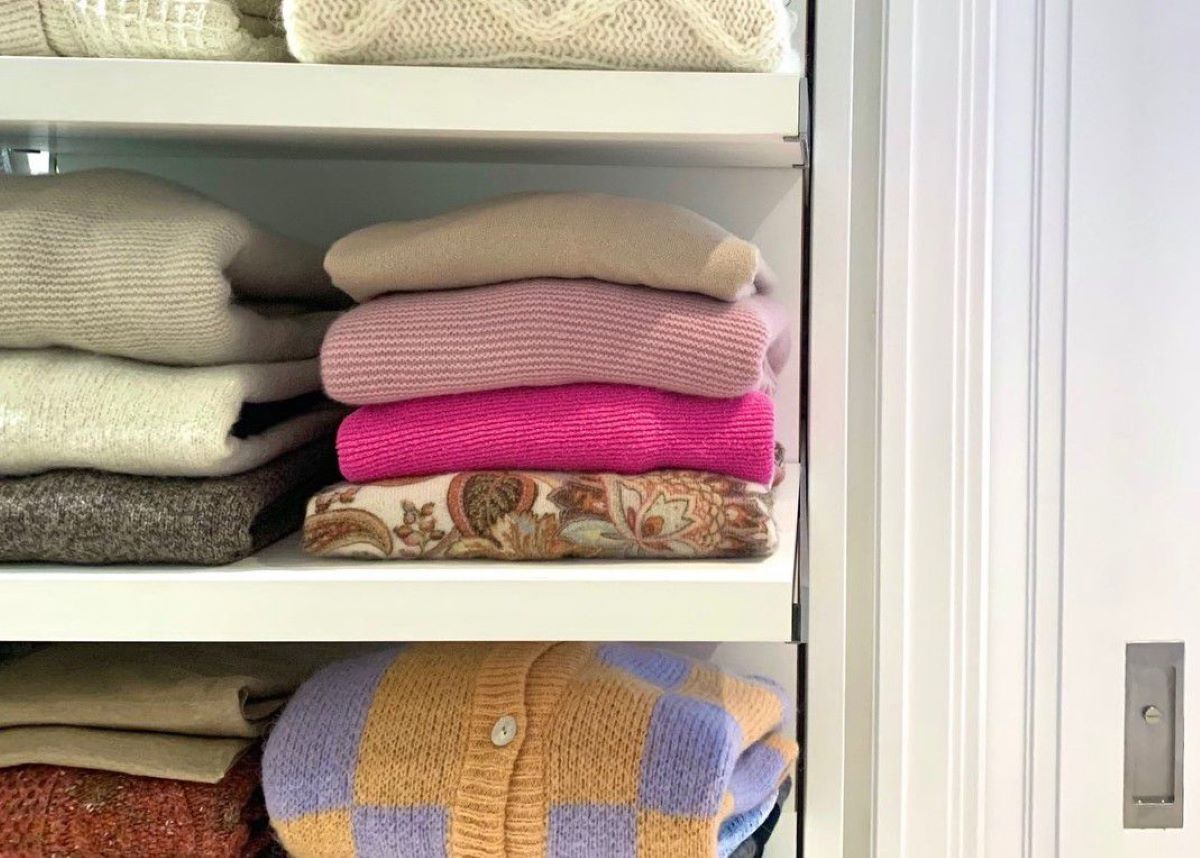


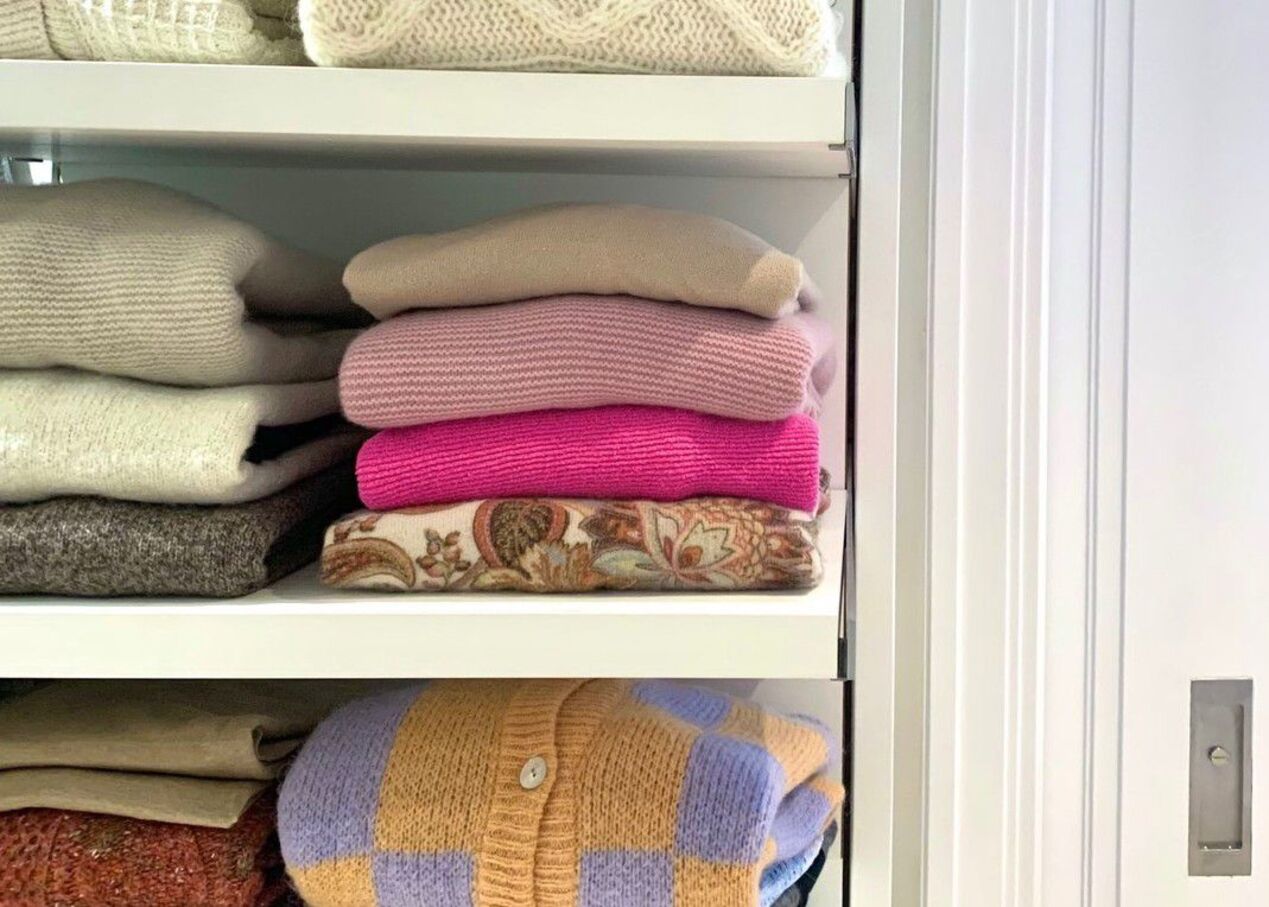
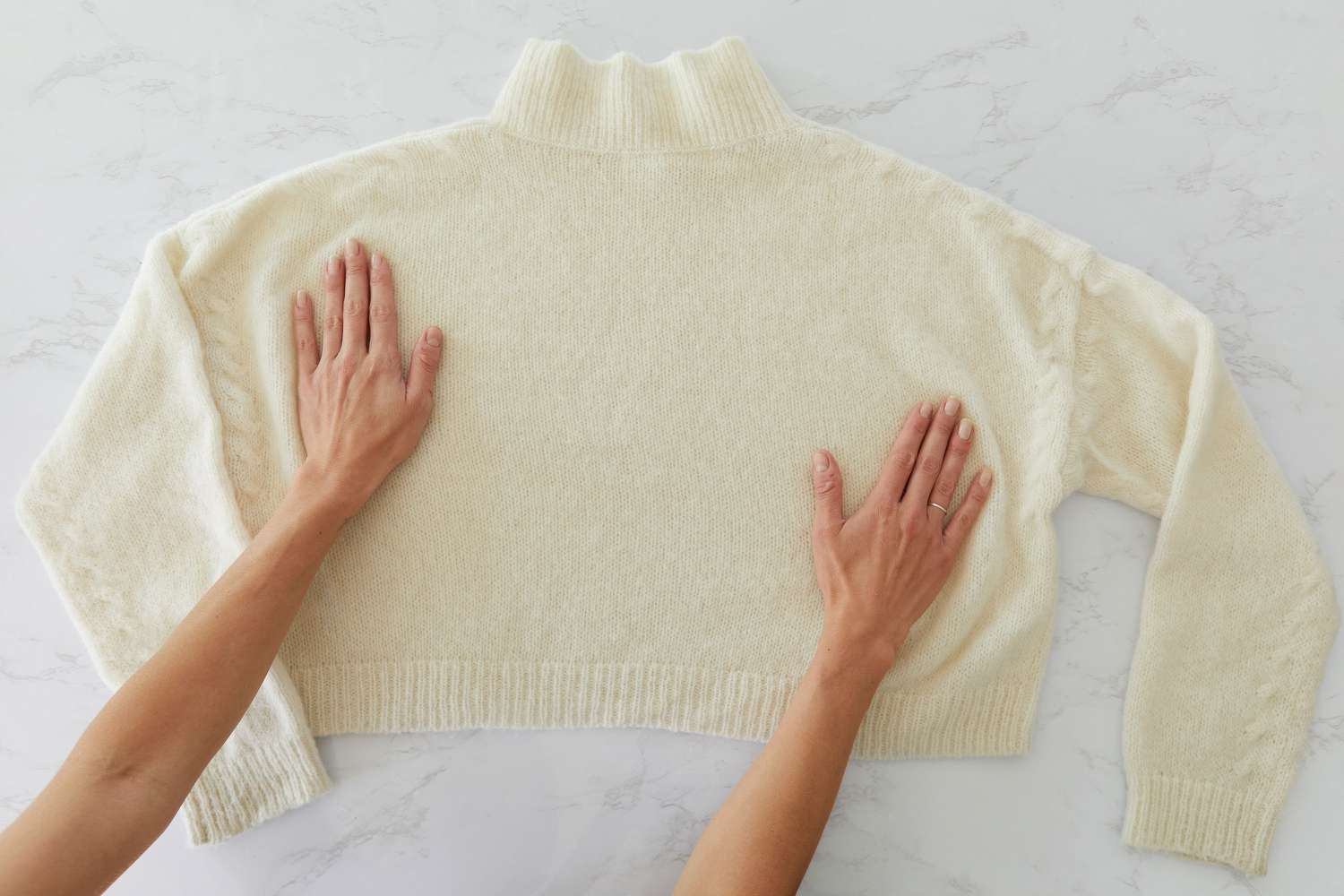
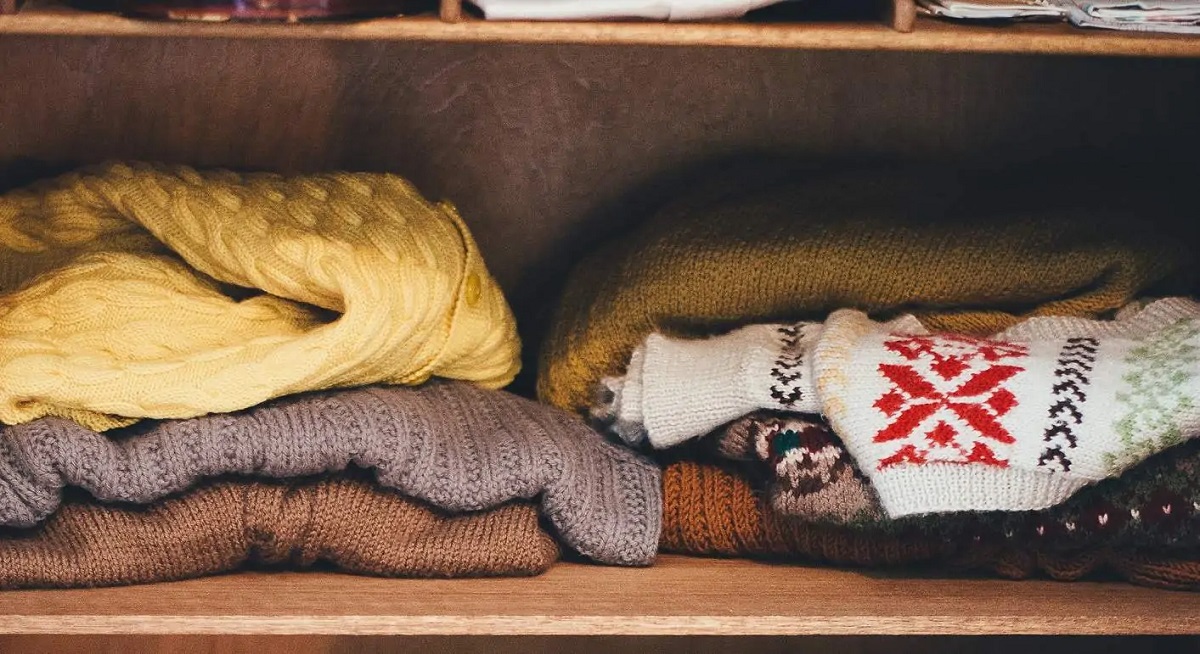
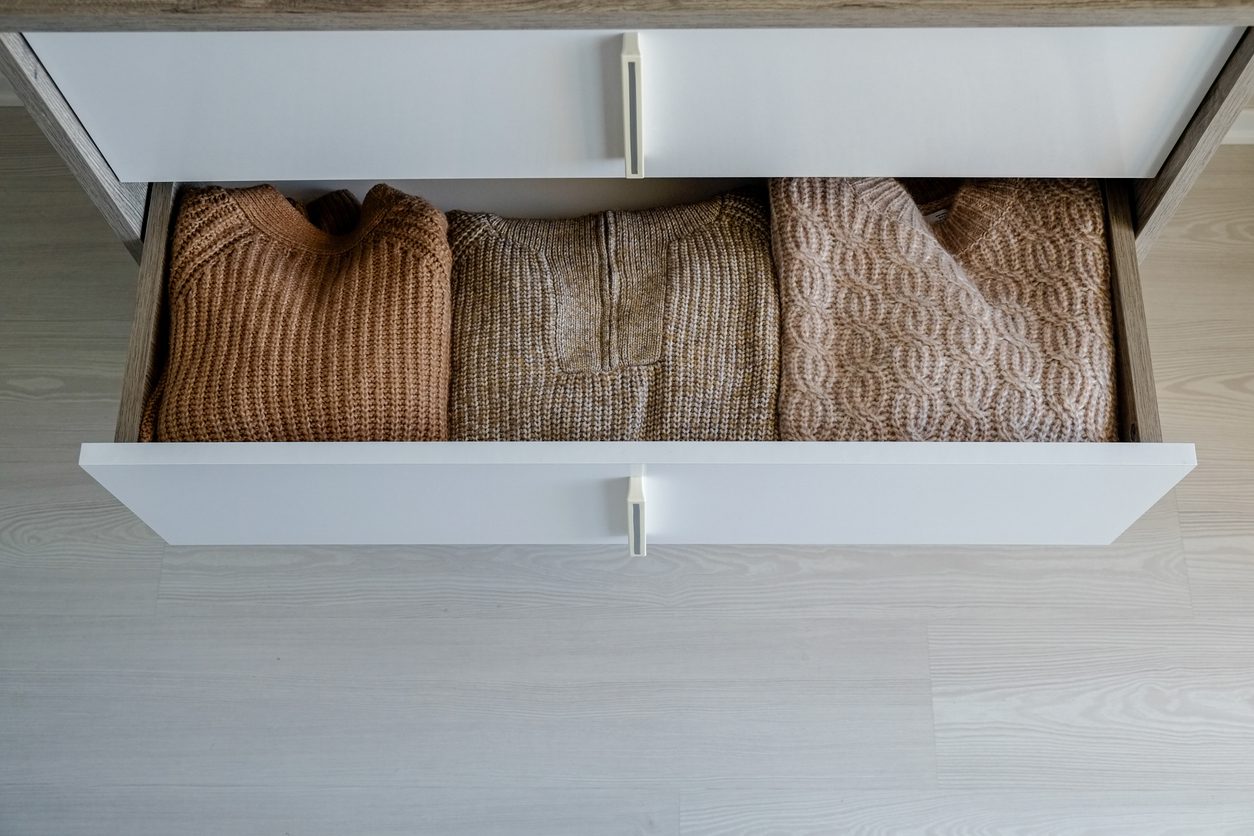

0 thoughts on “How To Store Bulky Sweaters”